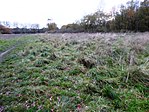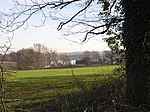The Castle Rock School
1958 establishments in EnglandAcademies in LeicestershireCoalvilleEducational institutions established in 1958Secondary schools in Leicestershire ... and 1 more
Use British English from February 2023

The Castle Rock School is a coeducational secondary school and sixth form located in Coalville in the English county of Leicestershire.The school was formed in 2020 from the merger of Castle Rock High School and King Edward VII Science and Sport College. The school joined the Lionheart Educational Trust in September 2022.
Excerpt from the Wikipedia article The Castle Rock School (License: CC BY-SA 3.0, Authors, Images).The Castle Rock School
Warren Hills Road, North West Leicestershire
Geographical coordinates (GPS) Address External links Nearby Places Show on map
Geographical coordinates (GPS)
| Latitude | Longitude |
|---|---|
| N 52.7298 ° | E -1.3264 ° |
Address
King Edward VII Science and Sport College
Warren Hills Road
LE67 4UW North West Leicestershire
England, United Kingdom
Open on Google Maps










